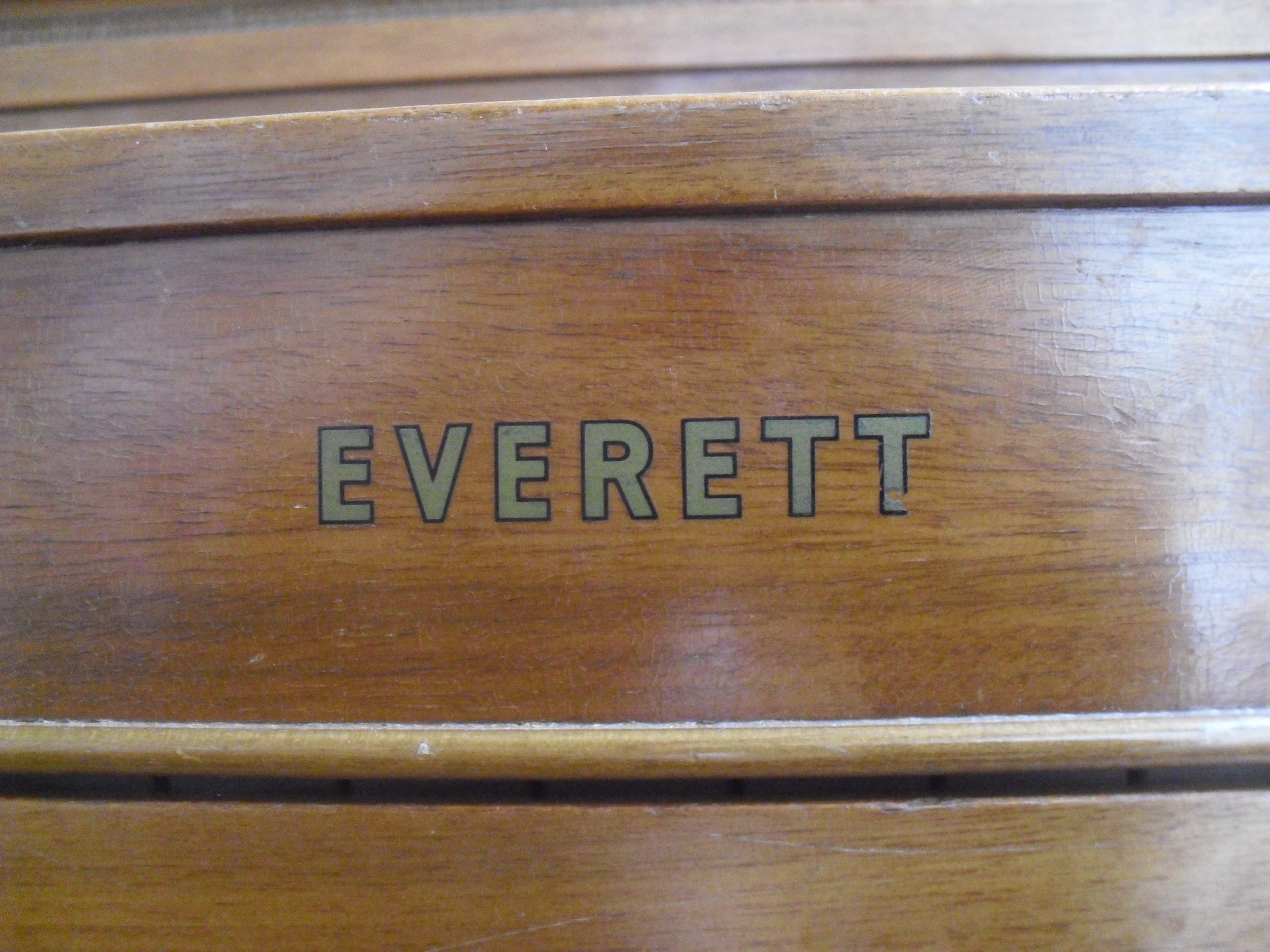
When taking a steady look back at the history of piano manufacturing it appears that the end of the 19th Century was a popular time to begin a piano-making company. In the USA this certainly seems to be the case, but as the popularity of the instrument increased and given the sheer size of the USA, perhaps it is hardly surprising that so many small businesses began. The Everett Piano Company was founded by the John J Church Company in 1883, establishing Boston as its preferred place to begin piano manufacturing. The J.J Church Company was a leading publishing company in the USA and probably saw the potential in embarking on making pianos.
Everett Piano Review
By 1936 Everett had joined forces with the Cable-Nelson Piano company. At this time manufacturing moved to South Haven, Michigan. Whilst there are some dissenting voices apparent on the internet regarding the quality of Everett pianos, it is worth remembering that the manufacturing history spans an impressive length of time. There seems however to be little doubt that Everett set out to design and make pianos of quality, durability, and stunning appearance. Many famous names aligned themselves with the brand over the years from French composer Cecile Chaminade to John Philip Sousa, bringing credibility and publicity to the company.
Over a decade from 1936 to 1946, and under the directorship of George Stapely, Everett Pianos took a different and innovative turn. Stapely was a formidable engineer with an established reputation. He brought his experience and skill to developing pianos that were not only improved tonally but significantly stronger. The aspect of the Everett piano Stapely created was the ‘Balanced Tension Back’. It was a brilliant piece of engineering that meant that the piano would stay in tune despite changes in conditions. Later piano manufacturers adopt the principles Stapely had used to further the design of their instruments. It gave the name of Everett even greater credibility and assured a lasting reputation for making pianos of notable quality and tone.
In 1949, John A Hens developed what was to be called the ‘Dyna-tension scale’. The difference this made to the piano was that the strings were under greater tension that in turn gave a clearer, distinctive quality of sound. (This was only applied to pianos with the Balanced Tension Back).
Everett made a full range of pianos including grand pianos, uprights, and console pianos. They also created a range of ‘school pianos’. As the name suggests these pianos were specifically designed to withstand the heavy usage any school or college would subject them to, whilst providing an instrument the was good to learn on. The good Dr. Elwyn C Carter of Michigan University Music Department set Everett the standards they would need to meet to conquer this market and by 1943 Everett School Pianos had sold more than 8,000 pianos.
The ‘Everett’ brand name was sold to The Hammond Organ company in 1954, who I believe still manufactured a selection of pianos until the company again shifted ownership to the Meridian Corporation. It was then acquired, in 1973, by the Yamaha Company. Everett pianos continued to be made throughout this period but the factory in South Haven was shut down by Yamaha in September of 1986. Manufacturing of pianos moved to Thomaston, Georgia but the Everett name was completely abandoned by 1989. From what I can gather from limited sources Everett Pianos enjoyed a revival around 1990 when a private company began to produce the instruments.
Many of the early instruments are quite difficult to find these days, but the advice seems to be that they are worth restoring if you are able or have the funds to engage a professional. There are one or two beautiful examples of advertising for the Everett piano range. These date from the early part of the last century but quite succinctly capture the passion that the manufacturers had for their pianos.
In one advertising brochure, both upright and grand pianos are listed. The prices range from $450 for an upright to $800 for a grand piano. What caught my eye was that they describe their pianos as having a “delicious singing tone, of full, sensuous volume, appealing beauty, and resonance, with lyric power of exquisite charm.” There isn’t much more one could add to this, and even if half the claims are true, it probably does point to the quality and uniqueness of the Everett pianos.
From reading a significant number of comments, questions, and complaints about Everett pianos, the overwhelming feeling coming across is that they were instruments that were not only well-built but housed some innovative technology too. This certainly seems to be true up to the early 1950s. One commentator noted that if you have a piano that is over one hundred years old then you probably have an instrument worth keeping if it is an Everett. The name certainly became synonymous with pianos that were good value, hard-working instruments, but not, as many claims, in the same league as Steinway, Blüthner, Bechstein, and such like.
Many of the manufacturers of pianos in the USA during the early part of the last century were pioneers, but also astute business people. Before the Great Depression, and indeed after it, pianos were good business and with a growing market across the country. Everett Pianos met a need of the time and even if they do not match the qualities and characteristics of the Germanic Greats, they stand as remarkable and sort after instruments in their own right.
Restored Everett grand pianos can attract prices above $30,000, especially those pre-1950. Equally, the Everett Upright is an instrument, in all its forms, that had a warm tone, pleasant action, and a well-made cabinet. If you are looking for an Everett Piano, do take advice from one or more experts, but if you play it and it feels and sounds the way you like, you will have a beautiful piece of piano history in your home.
